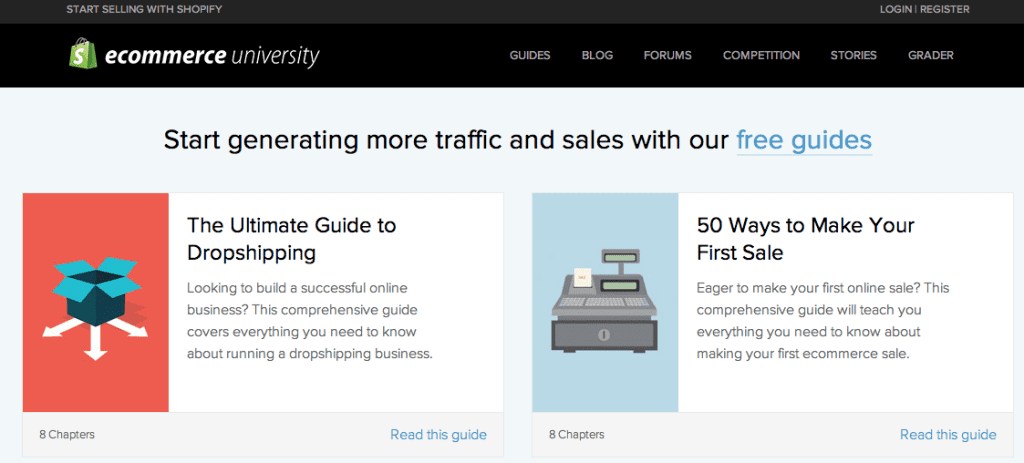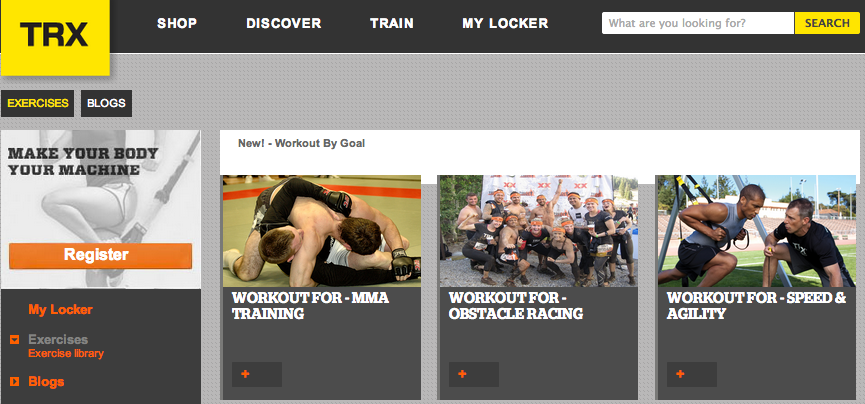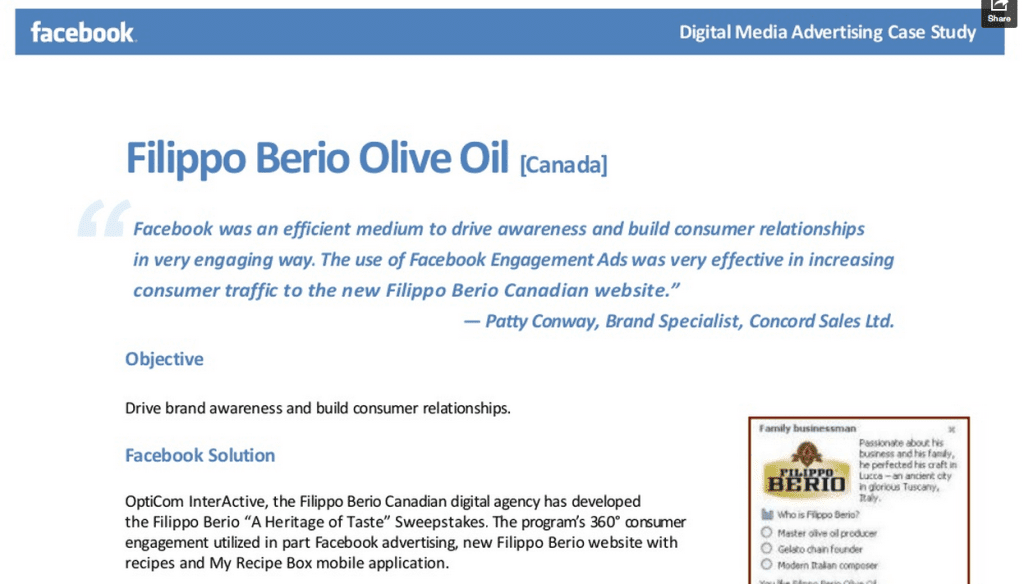Did you know that there are a few strategies that brands and startups can implement today that will drive real growth? Whether it’s growth in newsletter subscriptions, customer acquisition or inbound leads – Content can play a role in driving conversion. It’s easy to get caught up in the frenzy surrounding content marketing and fall into the trap of pushing out blog post after blog post with little thought going into strategy.
But we’re not going to let that happen.
Instead, I’m going to tell you that strategy is where you need to start. Before you even consider what tactics or content marketing growth hacks you should be using, you should think about your goals and the overarching strategy that will lead to success. Here are a few of my favourite resources that will help ensure that you have the basics understood and ready to rock:
1. Content Goals: How To Develop Content Marketing Goals
2. Content Strategy: An Epic List On Content Strategy
3. Content Intelligence: What Every Marketer Should Know About Content Intelligence
4. Content Audience: The Art and Science of Understanding the Person Behind the Visit
5. Content Execution: The Complete Guide to Working With Copywriters
Bonus: The Content Marketing Guide for Entrepreneurs
After reading those resources, you’ll be equipped to tackle some of the ideas I’m going to share in this post. I’m confident that the following tactics can be considered applicable to your business and industry. If not, I hope that you can use them as thought starters to get the juices flowing and see if they lead to an idea. I find the best ideas come from collaboration and inspiration from others. My hope is that after you read this post, you’ll be armed with the knowledge and insights you need to start creating and implementing tactics that drive growth. Let’s get to it.
1. Developing High Quality Industry Resources
In the early stages of growth, it’s likely that your organization isn’t seen as an industry leader. You’re likely unknown and very few people actual care about what you’re doing or have to say about your product or service. But what they do care about is value.
A lot of people like to call themselves industry experts and thought leaders but have yet to actual lead their industry or provide any unique thoughts to their respective professions. It’s these people who give the whole concept of thought leadership a bad wrap. You might in fact be one of these people but don’t worry. I’m going to show you how to create content that provides value and truly gives you an opportunity to stand out in a sea of posers.
If you want to be seen as a true industry leader, you need to give value to the industry you’re attempting to lead. Whether it’s through product innovation or through the services or products you offer; this contribution is what gives you the right to make claim that you’re an industry leader. One of the most effective approaches to achieving industry leadership is a commitment to sharing and developing high quality industry resources.
The biggest challenge for companies looking to gain early traction in their content is found in their ability to crate materials that are filled with insight, information and quality research. It’s easy to create content. It’s challenging to create content that is both unique, relevant and compelling. If you take the time to truly understand your target audience, it makes it easier to create and distribute content aligned with their interests and needs. Once you have a good understanding of their needs, it’s time to start creating content so valuable that people have no choice but to read it.
An example of a brand that has done this extremely well is Shopify. Rather than simply falling into the trap of believing that a blog is a content marketing strategy, they took a different approach and created the eCommerce University. The Shopify eCommerce University is the ultimate resource for any entrepreneur or wantrepreneur who is looking for information on how to get started with an eCommerce site, helping them stand out from competitors like SAP Spartacus. Here’s what it looks like:
Another example of a brand that isn’t as popular in tech circles as Shopify but is crushing the content marketing space is the folks behind the content marketing at TRX. Similar to the workout plans that you’ll find on the community, BodyBuilding.com, you’ll find specific plans made for TRX users on their website. These resources are extensive and spot on in terms of understanding the motivations and needs of their potential customers.
It might not be easy to build a collection of content like this but it can pay for itself if done correctly. With the right story, right approach and right distribution channels – You can quickly turn a high quality industry resource into a high converting content marketing asset.
2. Case Studies That Demonstrate Value
Jay-Z once said, men lie, women lie, numbers don’t. In business and for content marketing, it’s true that numbers mean everything. If you can develop a case study that demonstrates value to your potential prospects and clearly showcase the results associated with what you’re offering – people will take notice. Beyond that, they’ll compare the results that these case studies are highlighting to their own and think about the value you could provide them. That’s when the magic happens.
I don’t care what type of industry you’re in, there’s a clear opportunity in placing focus on the value you’re giving customers and clients. When you think of advertising on websites like Facebook, it’s very easy to think of how you would be able to generate results from it. That said, in the early days of Facebook, the concept of leveraging a social network to drive sales sounded quite ludicrous. Today, it’s happening on a regular basis and is a channel that acquires customers without the need of pushing the case studies that once made their business successful.
It all starts with case studies.
Customers who they acquired and were able to help facilitate in their quest to achieving specific goals and objectives. This initiative, this focus, this mission allowed for Facebook to quickly grow their advertising revenue and become a leader in media across the globe. The success of their clients translated into the success of their own business. If you can demonstrate that what you’re offering is more than fluff and innovation – you’ll win.
While it’s challenging in the early days to build multiple case studies, you should leverage your existing client relationships when dealing with similar prospects. For example, if you have a client who has given you permission to create a case study about their business, you want to share that case study with people who are in a similar industry. You will want to identify channels where these decision makers spend time and seed your case study in those communities.
It’s important to make it easy for buyers and prospects to be able to relate to your case studies. It’s this reason that companies like Hubspot have rolled out personalized customer success case studies that highlight everything from the company size to location. This level of detail gives everyone from a million dollar telecom company to a small mom and pops shop the ability to find stories and case studies that are applicable to their own needs.
I’ve worked with many startups over the past few years and in this time I’ve seen a clear difference in those that grow quickly and those who die slowly. The biggest difference is found in their ability to achieve product-market fit by demonstrating a clear value add to their customers. When you do this, your customers are more likely to be retained and new customers are more likely to be acquired. This is simple economics and sales. Demonstrate results and more results will follow.
3. Focusing On Conversion After Capturing Interest
So you’re crafting highly valuable content and you’re sharing amazing case studies, but what’s next? Now you need to now place your efforts on driving conversion.
It’s as simple as concluding your content with a call to action or leveraging technology to acquire their email when you first acquire their interest. For example, instead of simply offering up your case study to anyone who wants it, you can require users to submit their name and email to download it. Or if you want to provide the case study in the public, you can conclude with something like this:
This is the call to action found on a Case Study titled: How we made $1 million for Moz (formerly SEOmoz)—with one landing page and a few emails from Conversion Rate Experts. If you’re looking for an example or best practice on how to craft a compelling story for your case study – this is one of the best case studies you can learn from.It’s filled with a combination of the most important aspects of a quality case study: the problem, the results and the solution. What’s most important is their ability to share the story around their clients success in a compelling way while associating clear cut metrics to how their services drove meaningful results.
Conclusion
If you don’t have the time to build high quality industry resources or craft compelling case studies, you’re managing your time poorly. For organizations and startups that are looking for opportunities to achieve early stage growth, content marketing is your solution. With the right strategy and with the right consumer focus, you will be able to develop content that is both shared and frequently referenced and consumed. With a great product, this will drive growth and customer acquisition.
It’s important to understand your organizational goals and understand how content marketing can bring you closer to achieving them. Content marketing isn’t just something you add on as a nice to have. It’s not the solar panels on your new home – it’s the foundation your marketing and sales team should build on.
What do you think? What other tactics can drive growth?






